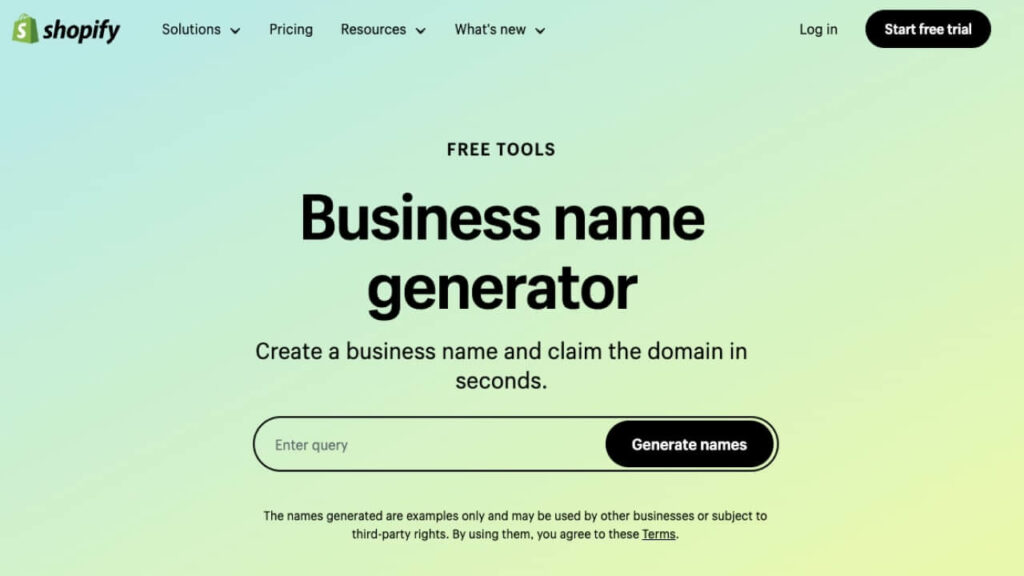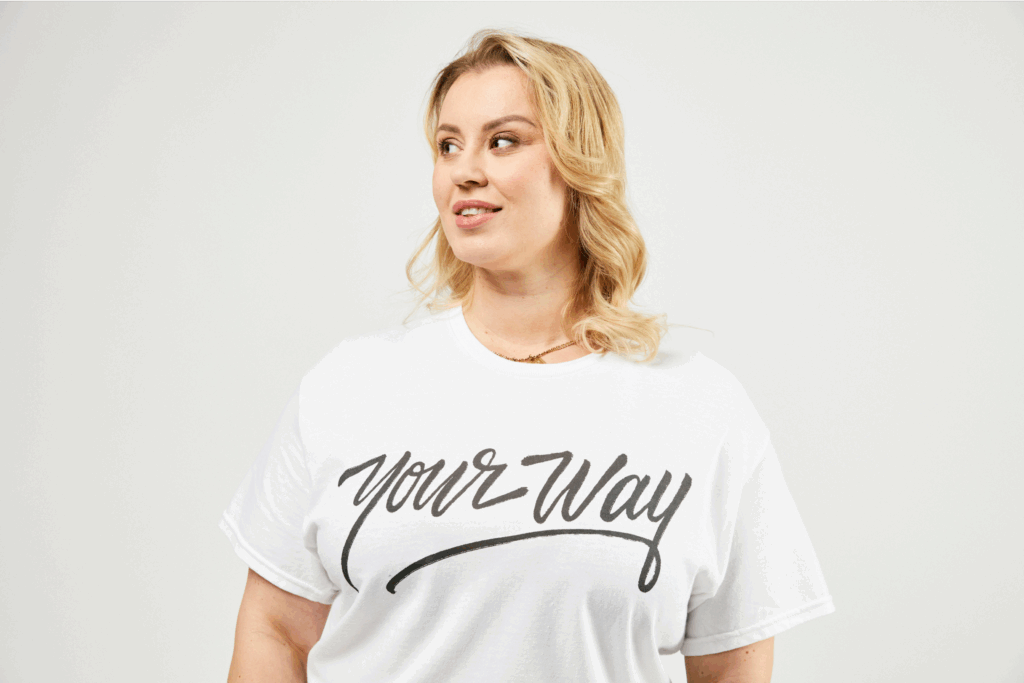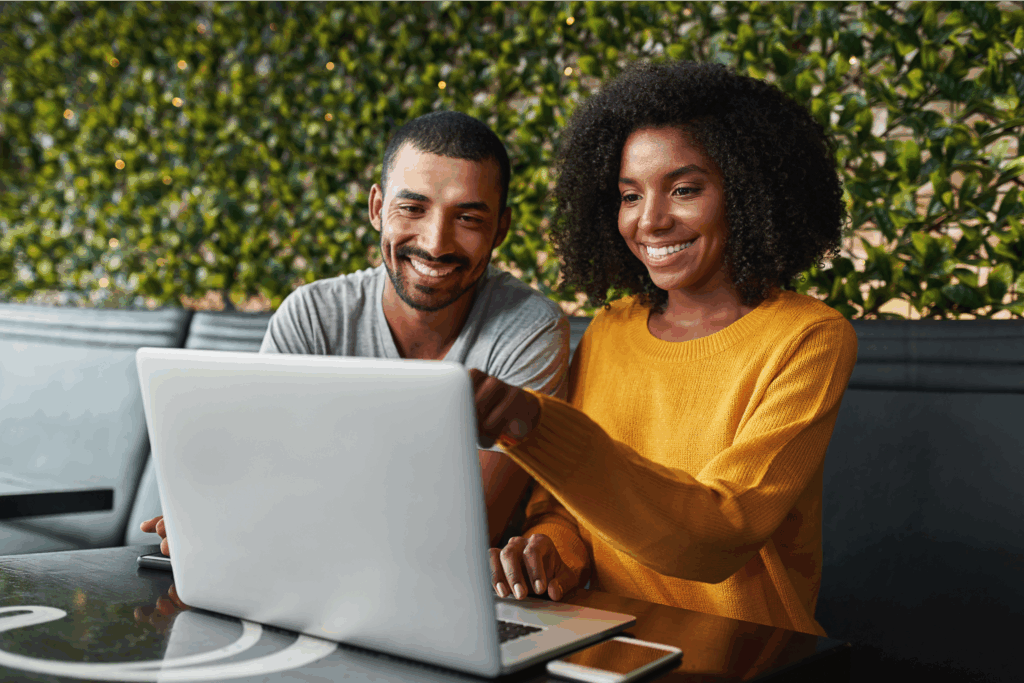As eCommerce continues to grow in popularity and the number of digital buyers steadily increases, starting a merchandise business is a great way to make money.
While it may seem tricky at first, don’t worry. With Print on Demand, anyone can easily start their own business without any investment, inventory, or logistical troubles.
This article shows how to start a merchandise business from scratch, thoroughly explaining the steps involved.
Why Print on Demand?

Print on Demand remains unrivaled as one of the most convenient ways to start a retail business. Here are some of its advantages.
Easy to start
A business model that’s welcoming to everyone. No need for extensive entrepreneurial or marketing experience.
Low investment
You pay for the product only after you make a sale, making it less expensive to start than a traditional business.
Unlimited personalization
Anyone can personalize the products they sell, easily reaching the hearts and minds of their audience.
Zero fulfillment efforts
The print-on-demand company does all the heavy lifting – printing, packaging, and shipping the final product directly to your customer’s doorstep.
No inventory management
Everything you sell moves directly from the supplier to the end customer, so there’s no need to track inventory or set up a brick-and-mortar store.
Start a Print on Demand business today
How to start a merchandise business: 9 easy steps
Let’s go over all the steps you’ll need to take to start selling custom merchandise online without holding any inventory.
Step 1: Choose a niche
As simple as it sounds, choosing a niche can make or break a retail business. With the right niche, entrepreneurs can sell more and enjoy less competition.
A niche product strongly appeals to a specific audience, allowing a business to stand out.
Typically, the scope of a niche should be as narrow as possible yet large enough to offer profit potential. However, for a merchandising business, the niche can be broader. As long as designs are related, a wider scope can do wonders, too.
For example, most of Hot Topic’s products are pop-culture related. They offer music, books, cartoons, and movie merchandise.
When choosing a niche market, follow your passion. If there’s a demand, you can build a successful business around it.
– Gather inspiration by exploring the most profitable print-on-demand niches.
– Use research tools like Google Trends, Ahrefs, and Semrush to check the popularity of your business idea.
Step 2: Create a business plan
![Create a Business Plan How to start a merchandise business in [bp_year]: The Print on Demand way 1](https://printify.com/wp-content/uploads/2023/04/Create-a-Business-Plan.jpg)
A business plan is a written description of a company, outlining the objectives and strategies for achieving them.
Typically, this document should include:
- Executive summary. A brief summary of the business plan. It explains what the company does, its target audience, and how it’ll achieve its objectives.
- Description of the company. An overview of the company, describing its business structure, model, and objectives.
- Market analysis. An overview of the industry, current trends, market size estimates, and an analysis of the competition.
- Management and organization. Explanation of how the business is run and handled, who the team is, and their responsibilities.
- Products. A section highlighting key characteristics of the products. Thoroughly describe them, compare them with similar products, and outline the pricing strategy and marketing plans.
- Customer segmentation. An overview of your potential customers. They can be segmented in various ways, such as demographically, behaviorally, or geographically.
- Marketing plan. A section that describes the ways and means of attracting customers. In short, it’s a road map explaining how a business organizes, executes, and tracks its marketing efforts.
- Logistics and operational plan. If a business uses the print-on-demand model, this section is short because the print-on-demand company takes care of it all – sourcing, printing, packaging, and shipping products.
Financial plan. This is all about your business funding. Most plans include an income statement, a balance sheet, and a cash-flow statement.
Use business plan templates from the U.S. Small Business Administration to save time and energy.
Start your own merchandise business today
Step 3: Deal with taxes
Laws and regulations vary significantly by jurisdiction. To stay in good legal standing, we strongly advise consulting a qualified legal professional who can give guidance specifically tailored to your local business needs.
In most of the United States, businesses must pay sales tax and other applicable taxes. Our article about sales tax provides in-depth information to better understand this topic.
Alternatively, here’s a video explaining how it all works:
When you start a merchandising business with Printify, we provide answers to all frequently asked questions about taxes in our Help Center.
– While registering a business isn’t always necessary, without making it a distinct legal entity, you could miss out on personal liability protection and legal and tax benefits.
– If you register, explore the most common business structures, picking the one that’s right for your merchandising business.
– In some cases and jurisdictions, an entrepreneur might need a business license.
Step 4: Obtain copyright licenses
![Obtain Copyright Licenses How to start a merchandise business in [bp_year]: The Print on Demand way 2](https://printify.com/wp-content/uploads/2023/04/Obtain-Copyright-Licenses.jpg)
Copyright laws vary from country to country, making it vital to understand the regulations in a particular jurisdiction.
If a business plans to use copyrighted material on its products for commercial purposes, it must get a merchandise license. Without one, a business can end up in significant legal trouble.
Typically, these are the steps an entrepreneur should take to get a license:
- Find the copyright owner of the intellectual property. Visit the U.S. Copyright Office and search their records.
Many works have a copyright notice, which helps to identify the owner. For example, check the copyright page of a book or the legal notice on a website.
- Contact the copyright owner. Explain how your business will use its intellectual property and what products it will create and sell.
- Negotiate a licensing agreement. Agree on guaranteed payments, advances, royalties on sales, agreement length, renewal options, territorial restrictions, and termination conditions.
Negotiations will differ from copyright owner to copyright owner, so it’s vital that both parties understand their rights and obligations.
– Assume that everything online is copyrighted, even if you can’t locate the author. Learn how to avoid copyright infringement from our recent article.
– Merchandising companies should retain all licensing agreements and keep track of their duration. After a license expires, a business must stop selling the licensor’s products.
Step 5: Brand your business
A brand helps people to recognize a business and the quality of products it offers. It’s easier to attract new customers, retain existing ones, and get more sales with a strong brand identity.
Things to consider when branding a business:
Business name

A good business name reflects the heart and soul of a company. It should be:
- Simple, clear, direct, and clearly conveying what it does
- Original, catchy, easy to spell, pronounce, and remember
- Visually appealing, stands out in print and on-screen
Shopify’s business name generator is a helpful tool anyone can use to create a unique business or store name.
Brand logo
A logo represents a business’s brand through a combination of visuals, typography, and colors, saying a thousand words with a single graphic.
It should be original, timeless, and memorable, incorporating brand values in a way that resonates with the target audience.
When designing a logo, keep the elements simple, use only two to three colors, and ensure it looks good across different mediums.
– Use graphic design tools like Canva, Pixlr, or Adobe Photoshop to create a logo.
– Learn how to make a logo in Photoshop in five easy steps.
Visual identity
A collection of images, illustrations, icons, and other graphical information that sets a brand apart from others.
When combined, these elements create an atmosphere, capturing the attention of potential customers.
Visual identity should be consistent across business sales channels, marketing campaigns, social media posts, and websites, so people can instantly recognize it.
Creating a visual identity is a time-consuming task – hiring a professional graphic designer is a great way to save time and trouble.
Step 6: Pick products
![Pick Products How to start a merchandise business in [bp_year]: The Print on Demand way 3](https://printify.com/wp-content/uploads/2023/04/Pick-Products-1024x576.jpg)
When picking products for a merchandise business, entrepreneurs should always keep their niche, target audience, and market trends in mind.
If done properly, they can create successful products that stand out, appeal to their customers, and evolve with changing trends.
The Printify Catalog offers more than 850 high-quality products – from apparel to home décor to accessories – at the best prices on the market.
There are several factors to consider:
- Print Provider. Cut delivery costs by choosing a local print provider. We have more than 80 carefully-vetted print providers located worldwide.
- Brands. Create products your customers will love by picking the most popular brands like Champion, Bella+Canvas, and Gildan.
- Product descriptions. Find the most suitable products for your online store by exploring their key features.
Learn how to pick a product from our in-depth guide.
Step 7: Find or create designs for your online store
When it comes to launching a successful merchandise business, design is what sets you apart from other companies.
You have several options:
- Obtain a merchandise license. While time-consuming, contacting the copyright owner and negotiating an agreement to use their work is a great way to get best-selling designs.
- Create original designs. Use graphic design tools like Adobe Photoshop, Canva, or Pixlr to create your designs.
- Hire a freelancer. Hire a professional graphic designer or agency to save time and effort.
- Use print-ready designs. Explore sites like Creative Fabrica and Designious that offer high-quality designs for online businesses.
– Our easy-to-follow graphic design tips show how anyone can create their first design from scratch.
– Our Shutterstock integration makes creating winning designs easy – they have a huge collection of high-quality images, illustrations, and graphics. When you sell a product with a design from their database, the production cost will include a fee.
Step 8: Select a sales channel, and set up a storefront
![Select a Sales Channel and Set up a Storefront How to start a merchandise business in [bp_year]: The Print on Demand way 4](https://printify.com/wp-content/uploads/2023/04/Select-a-Sales-Channel-and-Set-up-a-Storefront.jpg)
Selecting the right sales channel is vital for any eCommerce business’s success.
Whether you choose an eCommerce platform or marketplace, both offer an easy way to create a storefront and sell to online shoppers worldwide.
Here’s a summary and a breakdown of their advantages and disadvantages.
eCommerce platforms
An eCommerce platform is a software application that enables a business to create and run an online store. It’s a convenient way to sell online. They offer pre-built templates that are easy to customize.
While every platform strives to provide all the tools an entrepreneur needs, each is slightly different, with its own features, capabilities, and limitations.
Make sure the platform has everything you need: payment options (Apple Pay, PayPal), marketing tools (email, social media), and analytics to track the store’s performance.
Advantages:
- Effortless customization
- Easier to re-target customers
- Greater control over customer data
Disadvantages:
- Takes time to set up
- Higher marketing costs
- Some platforms require technical know-how
A few examples:
eCommerce marketplaces
These are like large online shopping centers. All stores are hosted on a single platform and sell their products to a pre-existing customer base.
While it’s easier and faster to set up, entrepreneurs have less control over the store’s appearance, content, and the data they can collect.
Advantages:
- Easy and fast setup
- Pre-existing customer traffic
- Beginner-friendly
- Easy to maintain
Disadvantages:
- Fewer customization options
- Intense competition
- Strict rules and policies
- Various fees
A few examples:
– Examine the pros and cons of the best sites to sell online to make the right decision.
– Printify seamlessly integrates with all of these platforms and marketplaces. Just follow our integration guides to get started.
Setting up a storefront
While setting up a storefront is a little different for each sales channel, there are a few basic principles to remember.
- Build credibility. Create a trustworthy eCommerce store by using a reliable payment provider and supplying as much relevant information as possible.
For example, include About Us, Contact Us, and Privacy Policy pages, ensuring customers are purchasing from a legitimate business.
- Focus on navigation. A seamless browsing experience is a must for any online store – customers should be able to find everything they need with just a few clicks.
Explore the most successful Shopify stores to learn how professionals design their stores.
- Use high-quality images. When making buying decisions, customers rely heavily on images. Increase the likelihood of sales by using images that highlight the best qualities of your products.
Hire a professional storefront designer to make your online store stand out.
Step 9: Market your business
When starting a merchandise business, neglecting lessons about marketing is a bad idea. Marketing is the engine that drives sales.
Here are a few ways to market a business:
- Social media marketing. An easy way to find, connect, and engage with an audience.
Build a strong presence on various platforms. Try to create content that encourages customers to make a purchase: run engaging challenges, post great product photos, or offer giveaways.
- Email marketing. It has stood the test of time as one of the oldest marketing strategies. It’s a cost-effective and efficient way to reach customers.
Use tools like MailerLite, Mailchimp, or Omnisend to automate the process.
- Content marketing. A marketing strategy that helps to attract and engage with an audience by creating and posting relevant content.
While it can be time-consuming, consistently delivering helpful content creatively is effective for building trust and authority.
- Ad platforms. Use Google, Facebook, or Instagram ads to reach your target audience quickly and effectively.
- Search engine marketing. Promoting an eCommerce store by increasing its visibility in search engine results. There are two approaches: search engine optimization (SEO) and advertising (Google Ads).
Learn more from our SEO Masterclass for Driving Sales. The webinar explains how to do keyword research, find the most relevant keywords, and analyze the competition.
How to start a merchandise business: FAQ
With Printify, starting a business doesn’t cost anything. Our print-on-demand service is 100% free. You pay for the products only after a customer orders from your store. Then, we do all the heavy lifting for you – printing, packaging, and shipping.
The steps for creating an online store will vary with the sales channel you choose. Easily find the right sales channel for your business by exploring our in-depth guide to the best sites to sell online.
There are several ways entrepreneurs can market their business:
- Use social media, content, influencer, and email marketing
- Run Facebook, Google, TikTok, and Instagram ads
- Showcase product reviews as testimonials
- Offer giveaways, run hashtag challenges and contests
The list is not exhaustive. In our blog’s Marketing Hints & Tricks section, we provide advice for online businesses of all sizes.
A few closing thoughts
As we conclude our step-by-step guide, you now have all the information you need for a successful start. While it takes a little planning, anyone can make money selling merchandise online.
Here’s a quick recap of the nine steps to starting a merchandise business:
- Choose a niche
- Create a business plan
- Deal with taxes
- Obtain copyright licenses
- Brand a business
- Pick products
- Create designs
- Select a sales channel
- Market a business









